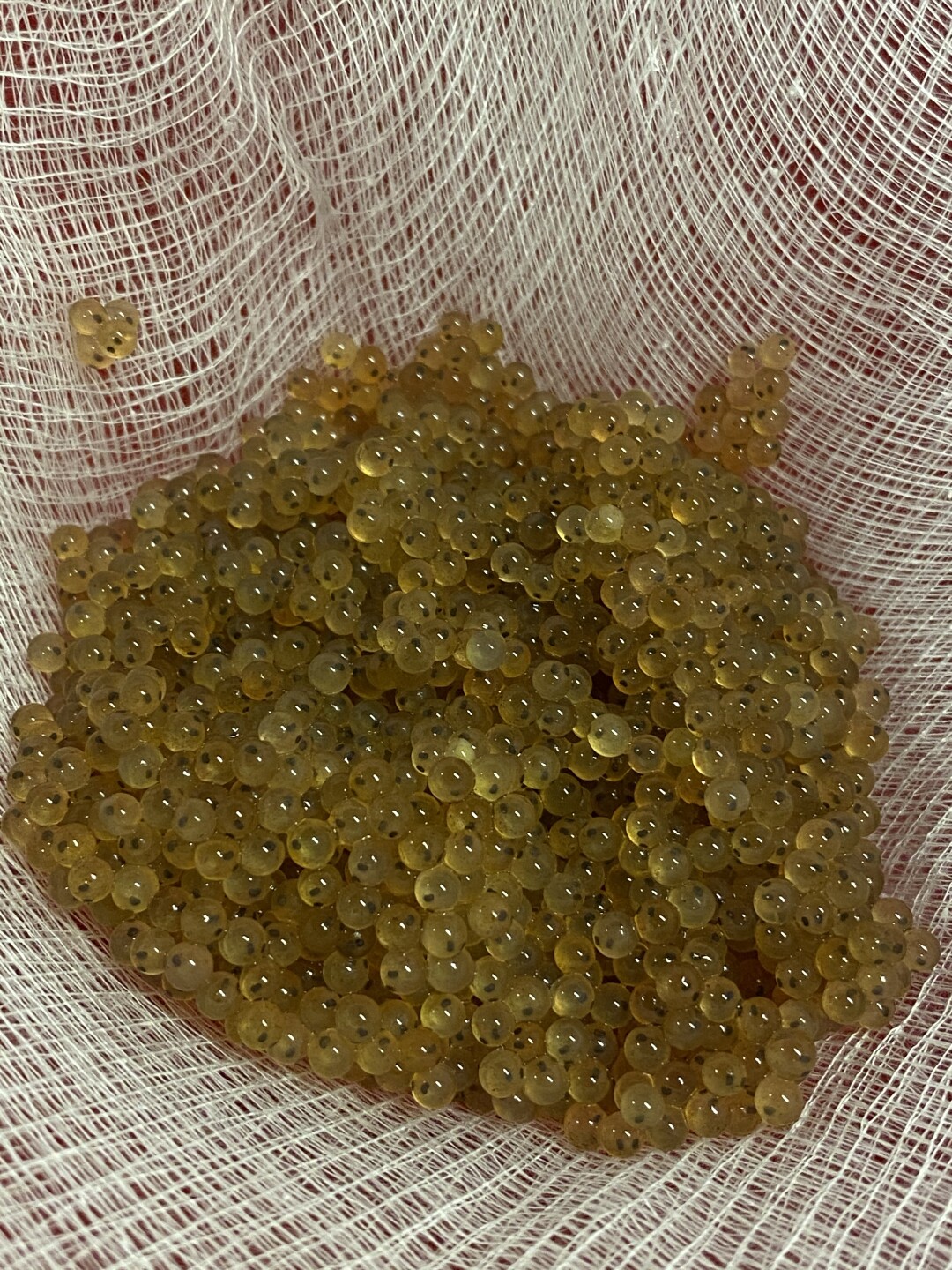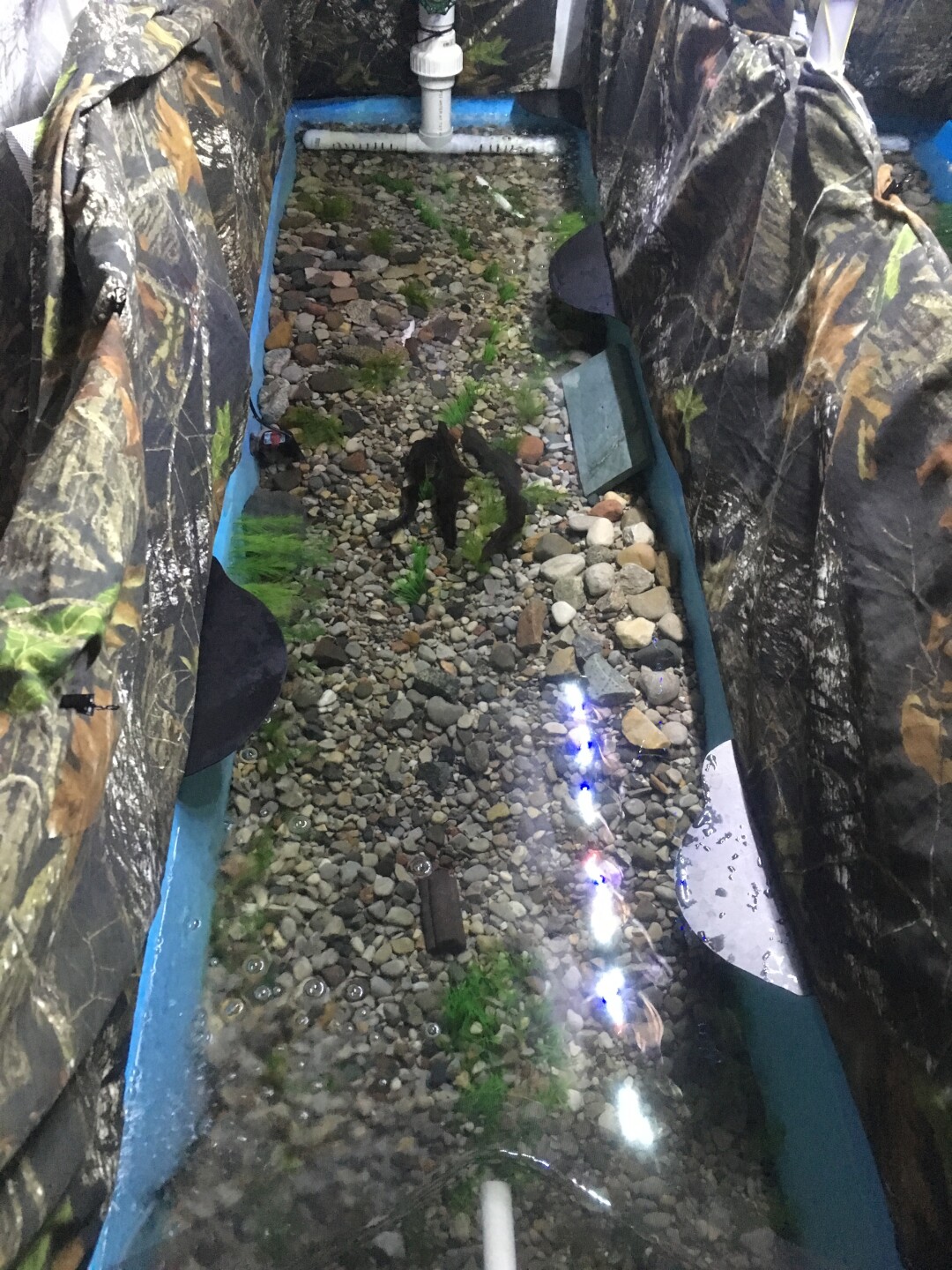EAST LANSING, Mich. — Arctic grayling were once bountiful in Michigan waters. They were wiped out here around 1936 by overfishing, competition from non-native species, and the destruction of their natural habitats. Now researchers at Michigan State University are working to reintroduce them to the state's streams.
"In the state of Michigan, right now we have brook trout, brown trout rainbow trout, we have other Pacific Salmonid, a bunch of non-game fish as well, tons of other species. But the big fish that's lacking in the Lower Peninsula is Arctic grayling," said Nicole Watson, a Ph.D. student in MSU's Department of Fisheries and Wildlife,.
The Arctic grayling is a unique fish. With its huge colorful, sail-like dorsal fin, it once inhabited just two states in the lower 48, Montana and Michigan. Michigan even has a city named after them.

And, when they left, an important piece of their ecosystem went with them.
"I like to use an analogy like Jenga. So if you've ever played Jenga, you have all these multiple pieces that are part of it. And we can think of an ecosystem as the Jenga tower, and each species is part of that tower," said Jessica Collier, a fish biologist with the U.S Fish and Wildlife Service.
Once you remove a piece, it becomes less stable, she said. So the more species we lose the more unstable the ecosystem can become.
"Grayling were an important part because they were part of the food chain, both in terms of eating some of the aquatic insects that occurred in river systems, and they were also part of what gets eaten by bigger fish," Collier said.
Right now grayling can be found in Alaska, Montana, Siberia and Canada.
There have been many attempts in the past to reintroduce them to Michigan but they have failed. Michigan started the latest Arctic grayling initiative in 2016.
"We started an initiative with the Little River Band Ottawa Indians to try to bring the science together with habitat evaluations and modern rearing technology, and see if we can make another go at it and reintroduce Arctic grayling successfully into some streams where they once existed," said Todd Grischke, assistant chief of Fisheries Division for the state Department of Natural Resources.
This initiative includes about 50 partners all working together to get these fish a head start.
Why are they doing it again? Watson says they have learned from past mistakes.
Her research on how Arctic grayling imprint on certain locations, on how many of them get eaten by predators, and what other fish they can live with in harmony has been going on since 2018.

She says several problems came up in the past, among them Arctic grayling simply swimming away from the rivers where they were introduced and not coming back or "rapid out-migration, which I am looking into by figuring out when these fish actually imprint to water.
"It's kind of like a way for them to know where they are and know where to get back to," Watson said. "I also look at water choice to see if there is an issue with familiar versus unfamiliar water systems. Plus I also look at predation and competition with other fish so that was another complication that was in the past reintroduction efforts."
She says they have learned from techniques Montana has used to rehabilitate its population. Montana's success, she said, was a game-changer for Michigan.
"We're trying new methods. Before it was rear a fish in the hatchery, and they would hatch out of the egg stage. You would reintroduce them as either a fingerling, which is as a fish that's about the length of your finger, or a yearling age fish, so after their first year of life," Watson said.

Now they are starting with the fish at the egg stage in the streams. She's been bringing eggs back and rearing them in her lab.
"In 2018, I brought back 5,000 eggs. In 2019 I brought back 10,000 eggs reared them all at my lab and did the same trials again," Watson said. "Half of those fish were transferred to Oden State Fish Hatchery, where their isolation ward was complete, so they were able to finish rearing...So the 2019 cohort is up at Marquette State Fish Hatchery and they're maturing. That's the key right there. So we have to wait until we have a fully mature broodstock, in order to introduce these fish to Michigan streams," Watson said.

The coronavirus caused them to have a gap year in 2020. But this year she was able to bring back another 10,000 eggs.
"I incubated 5,000 at my lab and Oden State Fish Hatchery has 5,000 of their eggs to incubate in their system right now. It takes about three to four years for these fish to completely sexually mature, and you don't want to take all of your eggs from one age class of fish, so we don't want to harvest eggs and milk from say, only the 2019 fish, because there's a chance you could cross siblings," Watson said.
Now they are starting with the fish at the egg stage in the streams. She's been bringing eggs back and rearing them in her lab.
"We need to make sure that these fish are healthy first, so it takes 18 months to go through a complete health certification," Watson said. "We'll have to wait three to four years for the 2021 broodstock to completely mature before we can put eggs in the streams. So we're looking at right about four years, and then we'll be able to have eggs in the water in Michigan streams safely certified disease-free."
Right now, there are four nominated watersheds that these fish could be reintroduced to, the upper Manistee, the Boardman, the Maple and the Jordan. But additional watersheds are being reviewed.

Communities can help support this initiative by following and knowing fishing regulations, helping to maintain habitats, and just learning about the fish themselves.
The initiative is being funded by outside donations. You can visit migrayling.org to find out how you can support it.
Want to see more local news? Visit the FOX47News Website.
Stay in touch with us anytime, anywhere.
Sign up for newsletters emailed to your inbox.
Select from these options: Breaking News, Severe Weather, School Closings, Daily Headlines, and Daily Forecasts.




